assembly rooms
assembly rooms
The Palace of Varieties and the later Princes Theatre
The grand building in Princes Street that was home to the Princes Street Constitutional Club, the Assembly Rooms, was built in 1888 and opened the following year. The large Assembly Room itself, measuring 40 feet (12.2m) across by 65 feet (19.8m) deep, could accommodate a thousand people. Additionally, for the use of members, there was a billiards room, a cards room and a reading room.
In 1895 a permanent stage was built, complete with a proscenium arch and three dressing rooms, reducing the overall capacity of the venue to about 700. The Assembly Rooms was the first venue in Yeovil to show films - black and white one-reelers - from 1896 when Yeovil's first film license was granted. This was also the year that the very first public screening of a film in the UK took place in London. In 1903 the Honorary Secretary of the Assembly Rooms was listed as Raymond Oliver Jourdain.
By around 1905 it was known as the Palace of Varieties (see second photograph below) although this title was assumed by the new purpose-built cinema, later the Palace Theatre, on the corner of Stars Lane and South Street.
The Princes Street Constitutional Club went into liquidation in 1939 and became known as the Princes Theatre.
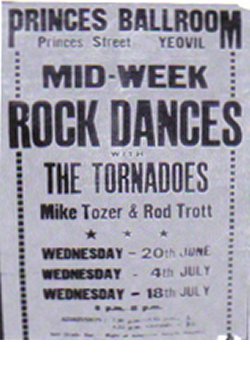 As well as
showing films,
the Assembly
Rooms were also
hired out for
private
functions and
other theatrical
productions. For
instance in 1906 the
Western Gazette
reported "The
Hockey Club's
annual dance in
aid of club
funds was held
in the Princes
Street Assembly
Rooms in Yeovil,
where more than
100 revellers
danced the
Wednesday night
away to the
sounds of Mr
Ring's
Orchestral
Band."
As well as
showing films,
the Assembly
Rooms were also
hired out for
private
functions and
other theatrical
productions. For
instance in 1906 the
Western Gazette
reported "The
Hockey Club's
annual dance in
aid of club
funds was held
in the Princes
Street Assembly
Rooms in Yeovil,
where more than
100 revellers
danced the
Wednesday night
away to the
sounds of Mr
Ring's
Orchestral
Band."
In January 1951 the Western Gazette reported: "Yeovil audiences have been enjoying 'Robin Hood and the Babes in the Wood', presented by the Wessex Social and Sports Club, in the Assembly Rooms, and there were over 2,000 advance bookings. More ambitious in its scope and lavishness than any of their previous pantomimes, 'Robin Hood and the Babes in the Wood', reflects the greatest credit on an enterprising amateur company. Before the doors of the Assembly Rooms opened for the first night on Monday, more than 2,000 people had booked in advance the full floor seating capacity for the seven performances this week. A limited number of tickets for accommodation on the secondary stage, on sale at the door, have been eagerly claimed each evening."
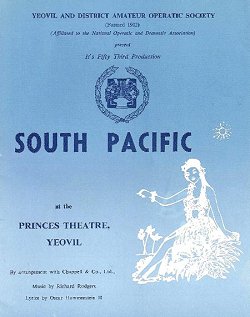 The
Yeovil &
District Amateur
Operatic
Society, formed
in 1902, put on
their annual
productions in
January or
February for
many
years at the
Assembly Rooms;
for instance in
1958 it was
their production
of 'Bitter
Sweet', in 1959
they produced
Gilbert &
Sullivan's 'The
Yeoman of the
Guard' followed
by 'The Merry
Widow' in 1960
and 'The Student
Prince' in 1962.
The 1965
production of
'The Desert
Song' was in the
newly-named
Princes Theatre.
Their final
production at
the Assembly
Rooms, before
moving to the
newly built
Johnson Hall
(now the Octagon
Theatre) was
Rogers &
Hammerstein's
'South Pacific'
in February
1972.
The
Yeovil &
District Amateur
Operatic
Society, formed
in 1902, put on
their annual
productions in
January or
February for
many
years at the
Assembly Rooms;
for instance in
1958 it was
their production
of 'Bitter
Sweet', in 1959
they produced
Gilbert &
Sullivan's 'The
Yeoman of the
Guard' followed
by 'The Merry
Widow' in 1960
and 'The Student
Prince' in 1962.
The 1965
production of
'The Desert
Song' was in the
newly-named
Princes Theatre.
Their final
production at
the Assembly
Rooms, before
moving to the
newly built
Johnson Hall
(now the Octagon
Theatre) was
Rogers &
Hammerstein's
'South Pacific'
in February
1972.
|
Yeovilians remember... Many thanks to Carolyn Osborn for the following memories - "My mum took me to see 'South Pacific' at the Princes Theatre when I was thirteen. It was on a Tuesday evening and I was so excited because it was a school night. Dad dropped us off and picked us up afterwards and mum and I had orange juice and biscuits during the intermission. The production was lovely - I still remember it so well - it was a special evening I'll never forget." |
The Assembly Rooms are now converted to shops on the ground floor and offices above.
gallery
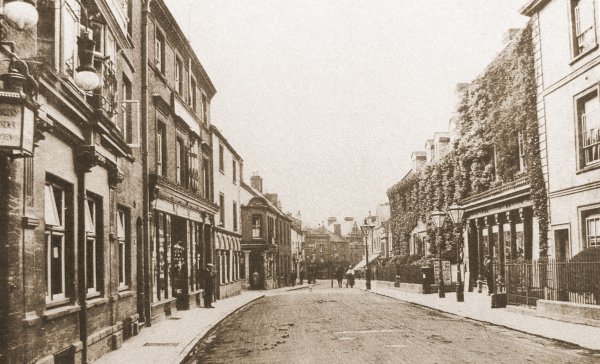
A photograph of the southern end of Princes Street, looking towards High Street, and dating to around 1900. The Assembly Rooms are at extreme left.
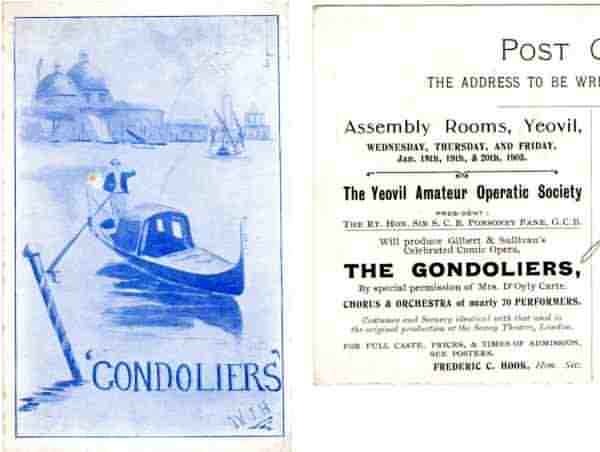
From my
collection
The front and part of the back of a postcard of December 1904 advertising the January 1905 performances of 'The Gondoliers' at the Assembly Rooms.

A colourised photograph of the northern end of Princes Street dating to around 1905. At this time the Assembly Rooms were known as the 'Palace of Varieties' as indicated by the vertical sign attached to it.
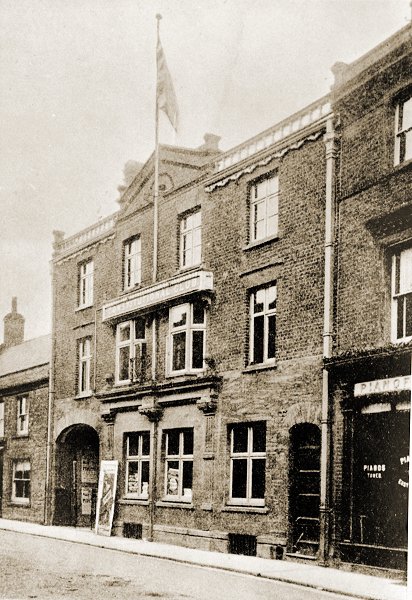
Now known as the Constitutional Club. This photograph was taken by Yeovil Photographer Jarratt Beckett and published in his 1897 book "Somerset viewed through a Camera".
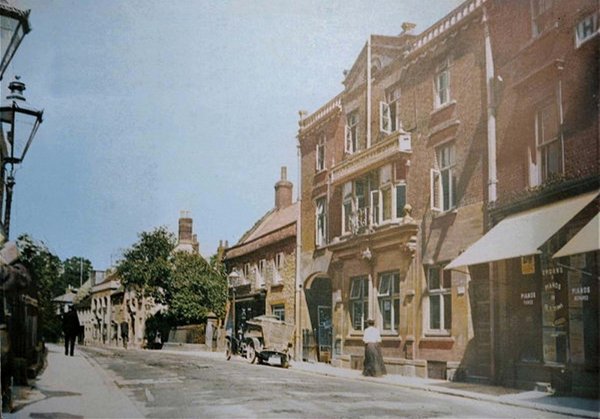
This colourised photograph
features in my
book 'Yeovil
From Old
Photographs'
A photograph of the imposing frontage of the Assembly Rooms in Princes Street of about 1910.
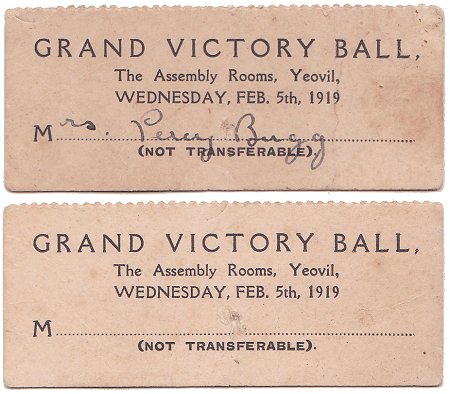
From my
collection
Ticket stubs from the 'Grand Victory Ball' held at the Assembly Rooms on 5 February 1919, celebrating the end of the Great War less than three months earlier.
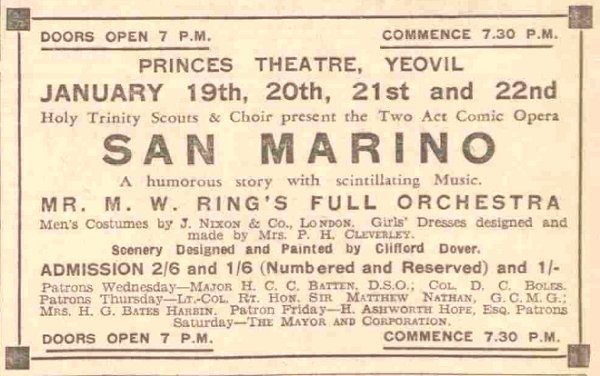
From my
collection
An advertisement for the Holy Trinity Scouts production placed in the 14 January 1938 edition of the Western Gazette. Note the impressive list of patrons attending.
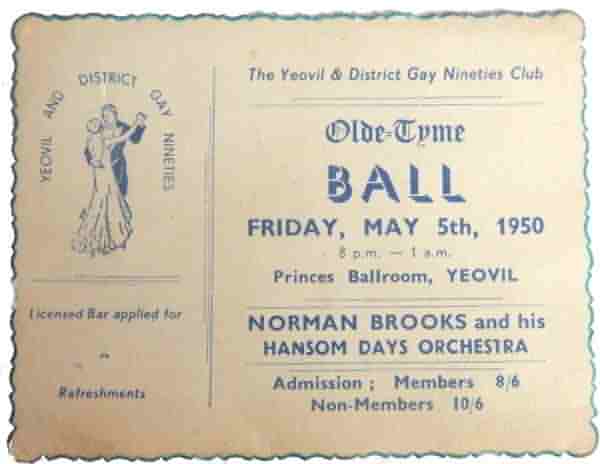
A 1950 ticket for an 'Olde Tyme Ball' at the Princes Ballroom.
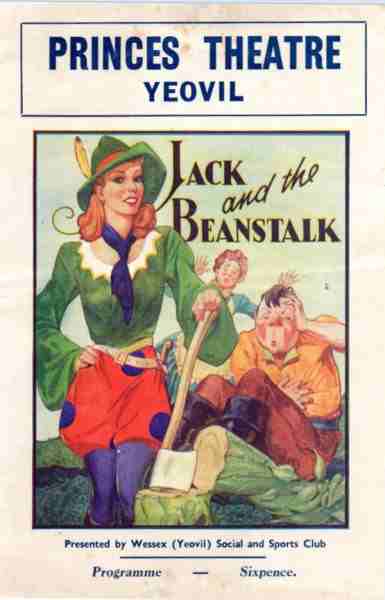
From my
collection
The cover of the Souvenir Programme of Wessex (Yeovil) Social and Sports Club's 1952 production of 'Jack and the Beanstalk' at the Princes Theatre.

A poster from 1957 promising Jazz and Skiffle all in one evening - what more could you want?
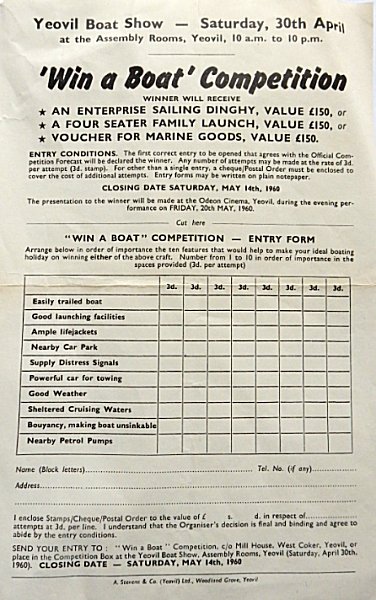
From my
collection
An entry form for the 'Win a Boat' competition at the 1960 Yeovil Boat Show, held in the Assembly Rooms. So, seriously, how on earth did they get boats into the building?
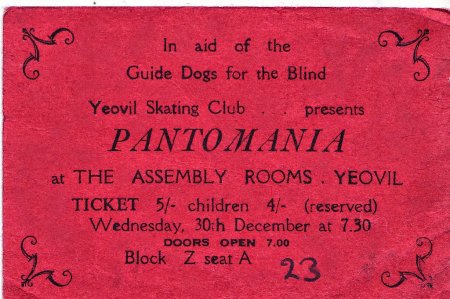
Courtesy of
Maxine Hawker
Thought to date from the mid-1960s, this is one of the tickets belonging to Maxine's mum and dad who attended the roller skating show Maxine appeared in.
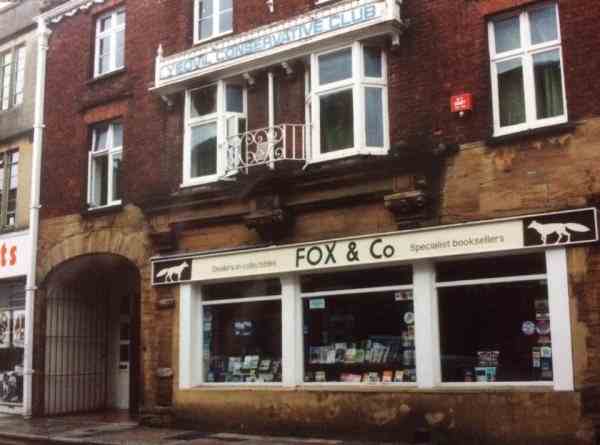
Courtesy of
Robert Smith
By 1991 the Assembly Rooms were home to Fox & Co bookshop and, above, the Yeovil Conservative Club.
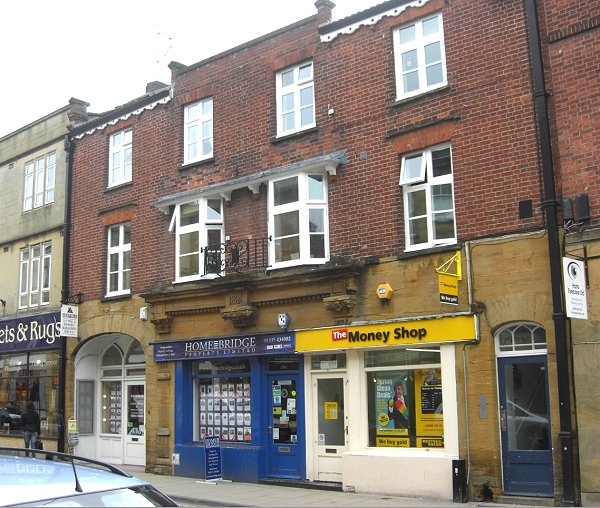
Now, sadly, far less imposing in 2013. The roofline pediment and balustrade have gone, together with many of the decorative elements and the garish shop fronts further degrade the building almost to anonymity.
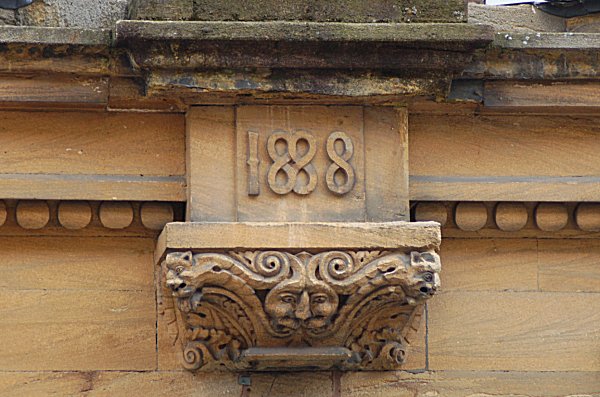
The central datestone of 1888 above an ornately-carved 'Green Man' survives beneath the ornate cast iron pseudo-balcony.
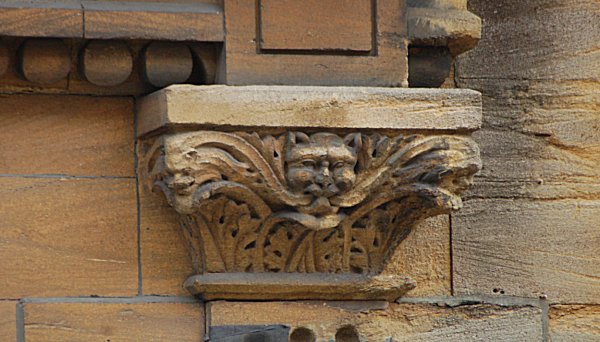
A matching carved 'Green Beast' - the only one in Yeovil - to the right of the datestone.
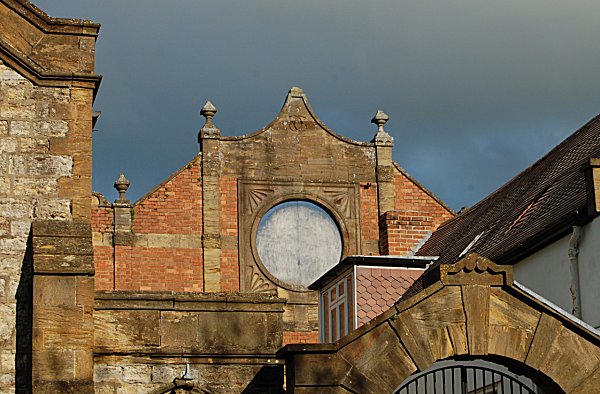
The ornate rear of the Assembly Rooms seen from St John's churchyard (the building at extreme left is the Chantry).
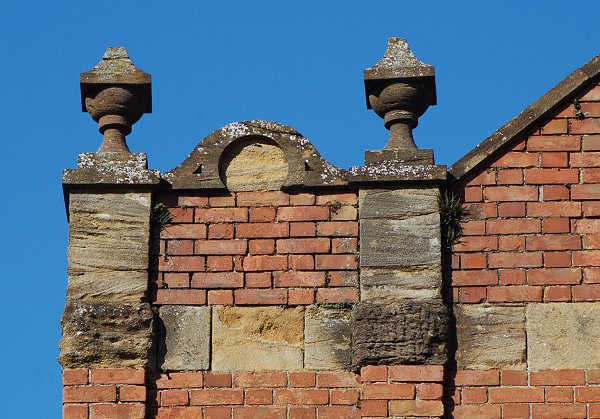
A detail of the rear of the building - considering this would rarely get a second glance even when built, let alone today, the extravagant detailing of the building is a true sign of the times in which it was created.